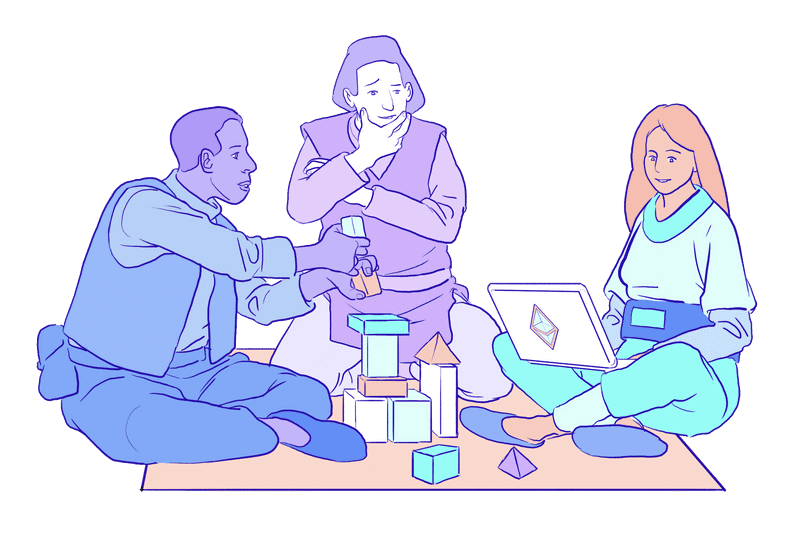Ethereum
developer
resources
How would you like to get started?
Learn Ethereum development
Read up on core concepts and the Ethereum stack with our docs
Learn through tutorials
Learn Ethereum development step-by-step from builders who have already done it.
Start experimenting
Want to experiment first, ask questions later?
Set up local environment
Get your stack ready for building by configuring a development environment.
About these developer resources
Inspired by the Mozilla Developer Network, we thought Ethereum needed a place to house great developer content and resources. Like our friends at Mozilla, everything here is open-source and ready for you to extend and improve.
If you have any feedback, reach out to us via a GitHub issue or on our Discord server. Join Discord
Help us make ethereum.org better
Like ethereum.org, these docs are a community effort. Create a PR if you see mistakes, room for improvement, or new opportunties to help Ethereum developers.
Explore the documentation
Introductions
Intro to EthereumAn introduction to blockchain and Ethereum
Intro to dappsAn introduction to decentralized applications
Intro to the stackAn introduction to the Ethereum stack
Web2 vs Web3How the web3 world of development is different
Programming languagesUsing Ethereum with familiar languages
Fundamentals
AccountsContracts or people on the network
TransactionsThe way Ethereum state changes
BlocksBatches of transactions added to the blockchain
The Ethereum virtual machine (EVM)The computer that processes transactions
GasEther needed to power transactions
Nodes and clientsHow blocks and transactions are verified in the network
NetworksAn overview of mainnet and the test networks
MiningHow new blocks are created and consensus is reached
The stack
Smart contractsThe logic behind dapps – self-executing agreements
Development frameworksTools for helping speed up development
Javascript librariesUsing javascript to interact with smart contracts
Backend APIsUsing libraries to interact with smart contracts
Block explorersYour portal to Ethereum data
SecuritySecurity measures to consider during development
StorageHow to handle dapp storage
Development environmentsIDEs that are suitable for dapp development
Advanced
Token standardsAn overview of accepted token standards
OraclesGetting off-chain data into your smart contracts
ScalingSolutions for faster transactions
